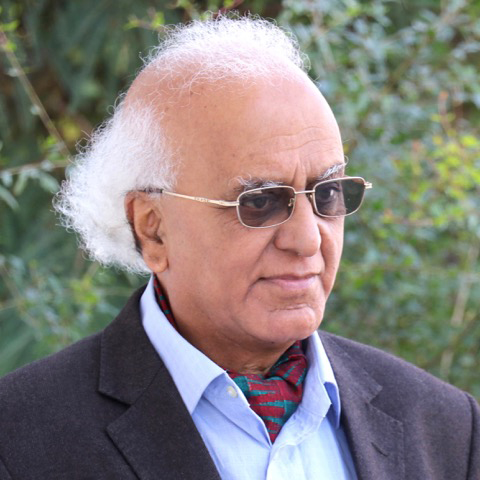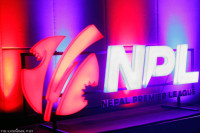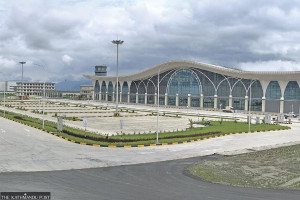Columns
Pigeons and architecture in Nepal Mandala
There is an integral relationship between architecture and pigeons in the Kathmandu Valley.
Abhi Subedi
Pigeons, their urban habitat and behaviour may be an unusual topic for an opinion piece in a widely read newspaper. But their movement, character and pervasiveness in the Kathmandu Valley have long intrigued me. I have always been interested in studying pigeons in city areas as an open subject. Given the tendency to depict the city in poetry and plays, pigeons are the most versatile and inspiring images for writing. Yet, I have found that the pigeons in the cities of Nepal Mandala, like everywhere else, also call for a study of the architectural features.
The topic of open space in cities has occupied the minds of scholars in recent times. City architecture has always fascinated us. However, this subject became essential, especially after talented architects and theatre scholars, both native and foreign, began to discuss the subject of space in the cities of the Valley. They started making the open spaces in the old cities of the Valley the subject of their studies.
The issue of shrinking space was discussed with great vision and concern by the late Satya Mohan Joshi on a number of occasions and in seminars. I have read the works of Sudarshan Raj Tiwari, Neil Guschov, Carl Pruscha and other native and foreign architects, and non-architect writers like Shiva Rijal, Deepak Thapa, Kanak Dixit and a few others. Those who participated in the discussions and published books and articles made open space a central subject of their studies. The 2015 earthquake made this topic even more significant, especially when architects wrote about the lost features of the cities. Sudarsanraj Tiwari followed the desperate study of space over the ruins of the 2015 earthquake. His studies and visual presentations were quite moving and earnest.
I should mention a couple of seminars and colloquiums organised by the right people. An interesting and needed colloquium and exhibition of the drawings and photographs of architectonic structures organised by the Kathmandu Institute of Architects at Taragaon on March 22, 2024, deserves our attention. In the seminar titled “Modern encounters in architecture: Kathmandu Valley (1945-1985)”, I was invited to share my opinion on the subject as a non-architect and a theatre-oriented person. A few days earlier, on March 20, 2024, the International Spring School organised a colloquium titled “Living heritage, performance and place making” at Jyapu Academy in Patan. The organisers were Monica Mottin of Heidelberg University, Monalisa Maharjan and Binita Magaiya of Social Science Baha.
These are a few examples of activities that recognise open space and architectural sites, celebrating them in some important areas. However, the problem is that such open spaces are now shrinking. Yet, the pigeons have not abandoned those spaces; they are making the best of them.
To me, pigeons always represent the natural rhythm and continuum of space that no other birds, animals or humans can do. Those inhabiting cities are called feral, untamed or undomesticated birds, as I have read in various articles and books. That would be a semantic peril if we fail to observe the pigeons rising and falling in the open and exquisite architectural spaces of Patan Durbar Square, Hanuman Dhoka, Bhaktapur Durbar Square and their human proximity. It looks as if these architectural sites—with proper designs not only of the lofts, the famous struts of buildings and temples, but also of the roofs, courtyards, lawns, porches and vestibules—were constructed for the pigeons
It appears that the pigeons in the Kathmandu Valley chose to remain in the architecturally developed areas, even though there were lush green fields and luxuriant growths of plants and woods. Pigeons move out of the city areas for brief spells. The ecological association of pigeons in Kathmandu is very lyrical and inspiring. But their habitat and breeding history are directly associated with the architectural sites. I have not had an opportunity to read extensively on this matter.
The architectural histories of Nepal Mandala, written by various scholars, do not mention the importance and history of pigeons. Nor are there stories of pigeon fanciers in Nepal. Friends at the University of Edinburgh and elsewhere were full of stories about over 50,000 pigeon fanciers in Britain and nearly the same number or slightly fewer people keeping race pigeons. I have read fascinating stories and books about pigeons. But what I want to stress here again, while talking about the architectural importance of pigeons, is that no bird is so closely and lovingly associated with architectural sites as pigeons. Looking back at the notes and memories of cities I visited, I see pigeons as the most lyrical and poetic birds.
The statues of English soldiers and the pigeons occupy Trafalgar Square in London. Reliving the memories of sights of pigeons makes me nostalgic and fills me with enthusiasm about the shared experience of humanity. The pigeons being fed in the Piazza of San Marco in Venice, the huge number of pigeons at Duomo of Milan, pigeons dominating the Louvre museum palace in Paris, the very large population of pigeons and the problems they cause in Mexico City, and the fascinating and familiar sight of pigeon feeding in old Delhi are some of these experiences.
The views of pigeons trying to find rhythm in the earthquake-damaged cities of Bhaktapur and Patan in 2015 were very moving. This is where one could see the integral relationship between architecture and pigeons in the Kathmandu Valley. The pigeons adjusted to the damaged architectural sights, appearing to assure us then that the ancient bond between humans of the city continues and that everything is all right with the world.
Pigeons are the agents of hope in Nepal Mandala cities. But we need not be too surprised to see them omitted from the monumental descriptions of the city. A key takeaway from the discussion about pigeons and the cities in Kathmandu Valley is to treat the subject of architecture, whether it be old, modern or postmodern, with respect by learning how the construction of buildings should maintain a wonderful aesthetic and continuity of architecture and life.
I end by citing a poem by poet Kedarman Vyathit, who encounters a pair of pigeons on the roof of a building in love and says, “Oh, how I would continue cooing and loving my beloved looking at the city!”




 10.12°C Kathmandu
10.12°C Kathmandu















